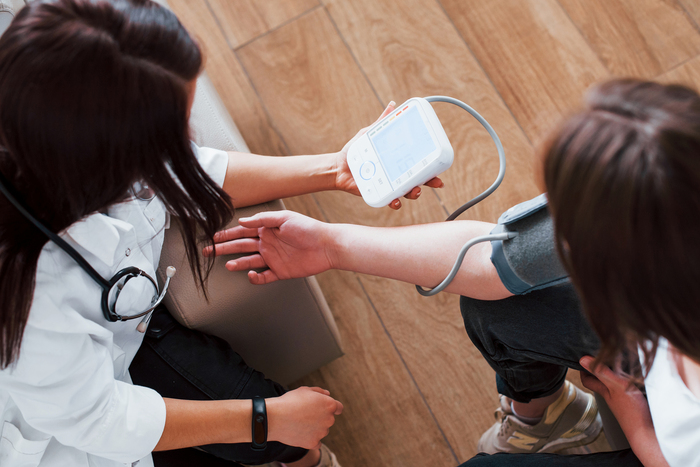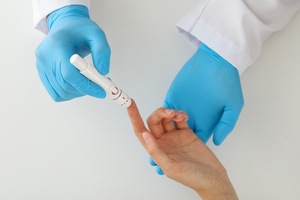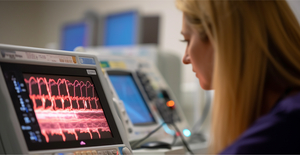Key points
- Annual physical exams are comprehensive assessments of an individual's health, including medical history review, vital sign measurements, and necessary screenings.
- Physical exams involve discussions about patient's health concerns, laboratory tests, and specific screenings or immunizations based on patient's age, gender, and medical history.
- The process of a physical exam includes medical history review, vital signs measurement, physical assessment, laboratory tests, and health counseling.
- Preparing for an annual physical exam involves knowing your medications, writing down questions, bringing additional documents, updating your medical history, and avoiding heavy meals before the exam.
- The article provides specific checklists for children, women, and men to prepare for their annual physical exams, underlining the role of these exams in preventive healthcare and timely diagnosis.

An annual physical exam is a crucial aspect of maintaining overall health and wellness, serving as a comprehensive assessment of an individual's physical condition. This article outlines the essential checklists and expectations associated with these exams, detailing the various components involved, such as medical history review, vital sign measurements, and necessary screenings or tests. You’ll also discover the importance of open communication with healthcare providers, highlights common procedures like blood tests and vaccinations, and offers tips on how to prepare for the appointment. By understanding what to expect during an annual physical, individuals can take proactive steps towards better health management and preventative care.
What Is a Physical Exam?
A physical exam, often referred to as a physical examination or check-up, is a routine medical assessment conducted by a healthcare professional to evaluate an individual's overall health. This examination typically includes a thorough review of the patient's medical history, a discussion of any current health concerns, and a series of tests and observations to assess physical well-being, according to the CDC. The CDC notes that during the exam, healthcare providers may check vital signs such as heart rate, blood pressure, and respiratory rate, as well as perform assessments of various body systems, including cardiovascular, respiratory, gastrointestinal, and musculoskeletal systems. The goal is to identify any potential health issues early on, provide preventive care, and guide patients in maintaining a healthy lifestyle.
In addition to the physical assessments, the CDC explains that a physical exam may involve laboratory tests, such as blood work or urinalysis, to screen for conditions like diabetes, cholesterol levels, or infections. Depending on the patient's age, gender, and medical history, specific screenings or immunizations may also be recommended. The physical exam serves as an opportunity for patients to engage with their healthcare provider, ask questions, and discuss lifestyle factors that may impact their health. Ultimately, regular physical exams are vital for early detection of health problems, promoting preventive care, and fostering a collaborative relationship between patients and healthcare providers.
What Happens During a Physical Exam?
During a physical exam, patients can anticipate a structured process that involves various assessments and discussions aimed at evaluating their overall health. This section outlines the typical steps taken during the examination, providing clarity on what to expect so individuals can feel more prepared and informed. Understanding the components of a physical exam can help alleviate any anxiety and encourage proactive participation in one's health care.
-
Medical History Review: The exam usually begins with a discussion of the patient's medical history, including past illnesses, surgeries, medications, allergies, and family health history. This information helps the healthcare provider understand any potential risk factors and tailor the exam to the individual's needs.
-
Vital Signs Measurement: Next, vital signs such as blood pressure, heart rate, respiratory rate, and temperature are measured. These readings provide essential insights into the patient's cardiovascular and overall health.
-
Physical Assessment: The healthcare provider will conduct a systematic physical examination, which may include checking the heart and lungs with a stethoscope, examining the abdomen, assessing reflexes, and evaluating the skin, eyes, ears, nose, and throat.
-
Laboratory Tests: Depending on the patient's age, gender, and health history, the provider may recommend blood tests, urinalysis, or other laboratory work to screen for conditions like diabetes, cholesterol levels, or infections.
-
Health Counseling: Finally, the healthcare provider will discuss the findings from the exam, answer any questions, and provide recommendations for lifestyle changes, preventive measures, or follow-up appointments as necessary. This collaborative conversation is crucial for empowering patients to take an active role in their health.
What Does an Annual Physical Include?
An annual physical exam is a comprehensive evaluation designed to assess an individual's overall health and identify any potential health issues early on, according to the CDC. They explain that key components typically included in an annual physical, providing insight into the various assessments and procedures that contribute to a thorough understanding of a patient's health status. By familiarizing yourself with these elements, you can better prepare for your exam and engage more effectively with your healthcare provider.
-
A review of your medical history, including past illnesses, surgeries, and family health history
-
Taking your pulse to assess heart rate and rhythm
-
Measuring blood pressure to evaluate cardiovascular health
-
Listening to your heart and lungs with a stethoscope to check for any abnormalities
-
Performing a physical examination of the abdomen, skin, and other body systems
-
Assessing your height and weight to calculate body mass index (BMI)
-
Checking vision and hearing as part of a comprehensive assessment
-
Conducting laboratory tests, such as blood work or urinalysis, as needed
-
Discussing lifestyle factors, including diet, exercise, and mental health
-
Providing recommendations for vaccinations or preventive screenings based on age and health history
Annual Physical Exam Checklists
Preparing for an annual physical exam can vary significantly depending on the age, gender, and specific health needs of the individual, according to MedlinePlus. Below, you’ll find tailored checklists that can help ensure that everyone is adequately prepared for their checkup. By considering the unique aspects relevant to children, women, and men, Medline Plus explains that patients can maximize the effectiveness of their visit and ensure that all necessary health concerns are addressed.
Annual Physical Checklist for Children
-
Ensure vaccination records are up to date
-
Discuss growth and development milestones with the pediatrician
-
Address any behavioral or learning concerns
-
Review dietary habits and physical activity levels
-
Prepare questions regarding sleep patterns and any health issues
Annual Physical Checklist for Women
-
Discuss menstrual health and any changes in cycles
-
Review family history of breast or reproductive health issues
-
Consider screenings for cervical and breast cancer (e.g., Pap smears, mammograms)
-
Talk about menopause symptoms and management if applicable
Evaluate mental health and discuss any stress or anxiety concerns
-
Discuss prostate health and consider screening options based on age
-
Review any changes in sexual health or function
-
Address cardiovascular risk factors, including cholesterol and blood pressure
-
Evaluate lifestyle factors such as diet, exercise, and substance use
-
Discuss mental health, including stress levels and overall well-being
-
Know your medications: Make a list of all medications, including prescriptions, over-the-counter drugs, and supplements, along with their dosages and frequency of use.
-
Write down questions: Prepare a list of questions or concerns you want to discuss with your healthcare provider to ensure that you address all relevant topics during your visit.
-
Bring additional documents: If applicable, bring any recent test results, medical records, or referral letters that may provide your provider with important context about your health.
-
Update your medical history: Review and update your personal and family medical history to share any new developments or changes since your last visit.
-
Avoid heavy meals before the exam: If you anticipate blood tests or other assessments, consider avoiding heavy meals beforehand to ensure accurate results.
Annual Physical Checklist for Men
How to Prepare for an Annual Physical Exam?
Preparing for an annual physical exam is essential for ensuring a productive and informative visit with your healthcare provider. By taking a few proactive steps, you can help facilitate a thorough evaluation of your health and address any concerns you may have. This section offers practical tips to help you prepare for your checkup, enabling you to make the most of your appointment and enhance your overall healthcare experience.
The Importance of Annual Physicals in Prevention
Annual physical exams play a vital role in preventive healthcare, serving as a proactive measure to identify potential health issues before they develop into more serious conditions. The CDC explains that these checkups provide an opportunity for individuals to engage with their healthcare providers, discuss any concerns, and receive personalized advice on maintaining a healthy lifestyle. By prioritizing regular physicals, patients can establish a baseline for their health, making it easier to detect changes over time and address any emerging risks promptly.
Timely diagnosis through annual checkups is crucial for several reasons, according to the CDC. First, many health conditions, such as hypertension, diabetes, and certain cancers, may not present noticeable symptoms in their early stages. Routine screenings and assessments can uncover these issues, allowing for early intervention and treatment, which can significantly improve outcomes. Additionally, annual physicals enable healthcare providers to monitor risk factors, such as cholesterol levels and body weight, and guide patients in making informed lifestyle choices to mitigate these risks. Ultimately, prioritizing annual physical exams fosters a proactive approach to health, empowering individuals to take charge of their well-being and reduce the likelihood of serious health complications down the line.
FAQs
What is the purpose of an annual physical exam?
An annual physical exam is a comprehensive assessment of an individual's health. It serves to identify potential health issues early on, provide preventive care, and guide patients in maintaining a healthy lifestyle.
What does a physical exam typically include?
A physical exam typically includes a review of the patient's medical history, vital sign measurements, physical assessment, laboratory tests, and health counseling.
How should I prepare for an annual physical exam?
You should know your medications, write down questions, bring additional documents, update your medical history, and avoid heavy meals before the exam.
What is the role of annual physical exams in preventive healthcare?
Annual physical exams play a vital role in preventive healthcare. They help identify potential health issues before they develop into more serious conditions, establish a baseline for health, and guide patients in making informed lifestyle choices.
Are there different checklists for physical exams for children, women, and men?
Yes, the preparation for an annual physical exam can vary depending on the age, gender, and specific health needs of the individual. Different aspects are considered for children, women, and men.
What is the goal of these physical exams?
The goal of these physical exams is to provide preventive care, guide patients in maintaining a healthy lifestyle, and identify any potential health issues early on.
How does a physical exam contribute to preventive healthcare?
Physical exams contribute to preventive healthcare by allowing for early detection of potential health issues, which can lead to timely treatment and better health outcomes.
What are the specific checklists for preparing for a physical exam?
The article provides specific checklists for children, women, and men to prepare for their annual physical exams, ensuring they are ready and know what to expect.









